Editor's note: This is the second article of a series covering the discovery of two Ming Dynasty shipwrecks in the South China Sea. CGTN will cover more on this topic as the archaeological research progresses.
Piles of porcelain crockery with bright glazes, stacked timber logs, these are what Chinese researchers found in two shipwrecks lying some 1,500 meters underwater in the northwest continental slope of the South China Sea.
Read more: Deep-sea treasure hunt: An accidental discovery
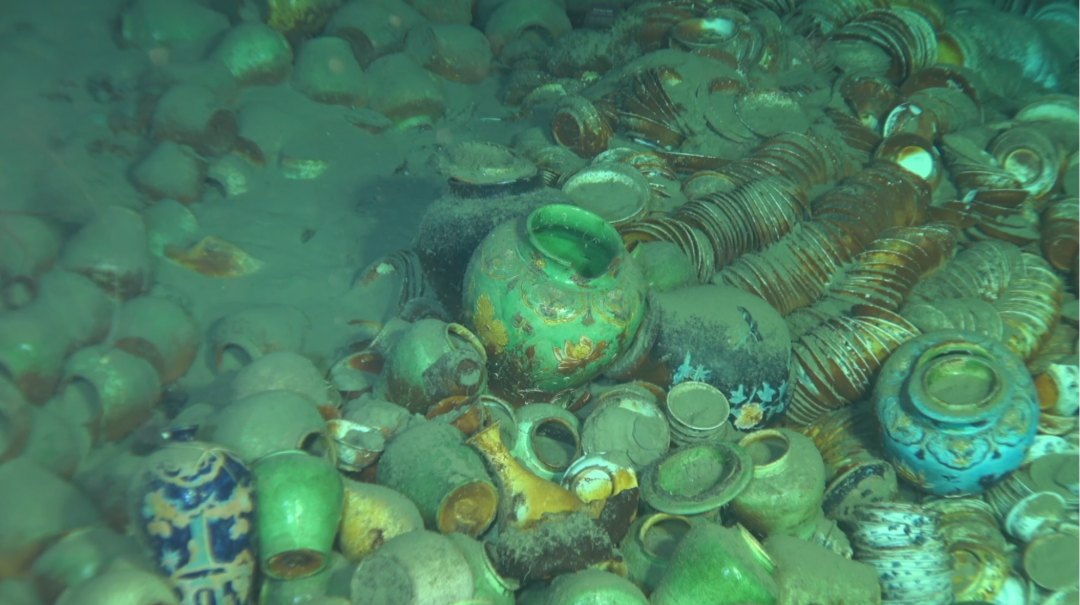
Porcelain wares found at a shipwreck in the South China Sea. /NCHA
Porcelain wares found at a shipwreck in the South China Sea. /NCHA
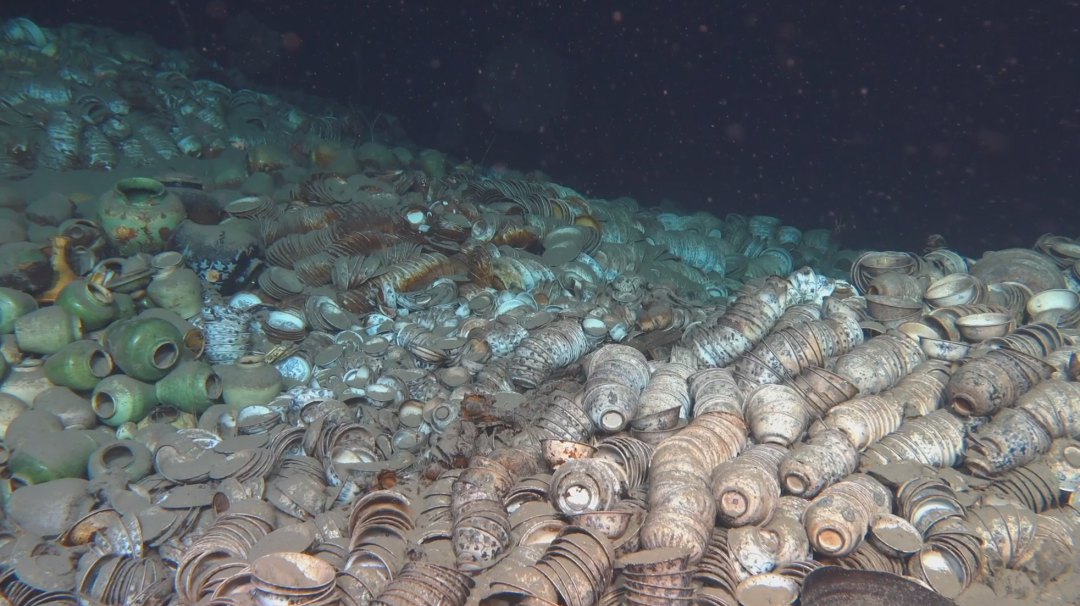
Porcelain wares found at a shipwreck in the South China Sea. /NCHA
Porcelain wares found at a shipwreck in the South China Sea. /NCHA
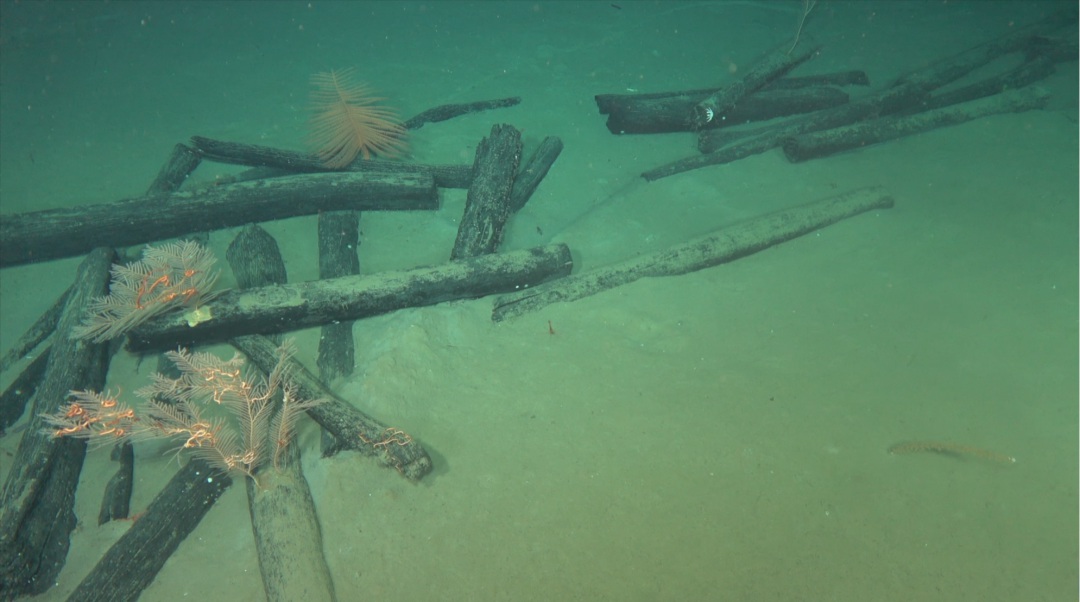
Wooden logs found at a shipwreck site in the South China Sea. /NCHA
Wooden logs found at a shipwreck site in the South China Sea. /NCHA
The two heavily-laden ships, which experts say are of high historical, scientific and artistic value, would have remained unknown without the development of deep-sea technological equipment.
Armed by a series of new technology and gears, the discovery "has taken an important step in the research and development of underwater archaeological excavation" according to Tang Wei, director of the archaeological research center of the National Cultural Heritage Administration (NCHA).
Making deep-sea archaeology possible
Limited by technology, underwater archaeology in China used to be carried out mainly within a depth of around 40 meters, with scuba diving being the major method of operation. Any further than that would greatly increase the difficulty of scuba diving and sharply reduce the efficiency.
To advance deeper, deep-sea diving technology was vital.
It was not until 2009 that China made breakthroughs in the field, making deep-sea archaeology realistic and feasible.
The country's first deep-sea manned submersible Jiaolong, named after a mythical dragon, completed the 1000-meter sea trial that year. One year later, it reached 3,759 meters underwater, making China the fifth country, following the U.S., France, Russia and Japan, to have the technology for a submersible dive of more than 3,500 meters below sea level. With a designed diving depth of 7,000 meters, Jiaolong reached 7,062 meters in the Mariana Trench in June 2012.
Shenhai Yongshi (Deep Sea Warrior), the country's second-generation deep-sea manned submersible, is capable of reaching a depth of 4,500 meters. With 95 percent of its components being domestically made, cost of deep diving has been reduced significantly.
Fendouzhe (Striver), the country's 10,000-meter manned submersible, set a new record for China's manned deep diving by reaching a depth of 10,909 meters in the Mariana Trench in 2020.
"After research and development for years, China has possessed the technical equipment and talent required for deep-sea archaeology," Zhu Xuehua, director general of the Department of Science and Technology for Social Development at the Ministry of Science and Technology, said at the press conference.
Zhu said China has generated a multifunctional equipment cluster, including manned submersibles such as Jiaolong, Shenhai Yongshi and Fendouzhe, all of which have strong deep-sea operation capability, and realized low-cost, high-frequency operation and maintenance.
The country has also been progressing with the development of submarine-borne detection equipment with high precision. "Domestic acoustic payloads such as bathymetry and side-scan equipment and imaging sonar are ready for application, and magnetic detection technology is also being advanced," said Zhu.
Backed by deep-water equipment, "China has greatly improved the capabilities of deep-sea archaeology, resource exploration, rescue and salvage, and deep-water scientific research operations, promoting its marine cognition, development and protection to a deeper and broader dimension," he added.
A collaborative system integrating deep-sea archaeology, sci-tech research and marine area management has been formed between relevant ministries and institutes, Zhu added.
Ku Weiqun, deputy director of the Bureau of Major R&D Programs at Chinese Academy of Sciences (CAS), said at the press conference that the CAS established the Institute of Deep-sea Science and Engineering in Sanya City, south China's Hainan Province in 2011, which has been committed to the technological development of the field.
It has developed several advanced landers, making China the fourth country in the world capable of detecting objects at a depth of over 10,000 meters.
Besides Shenhai Yongshi and Fendouzhe, the institute has also harbored the scientific research vessels Tansuo-1 (Exploration-1) and Tansuo-2, as well as underwater robots known as "Haidou," "Haiyi," and "Haixing."
Ku noted that CAS has accelerated the development and construction of deep-sea in-situ scientific experiment stations, seabed science observation network in the South China Sea, and cold spring ecosystem scientific devices.
From 40 m to 1500 m underwater
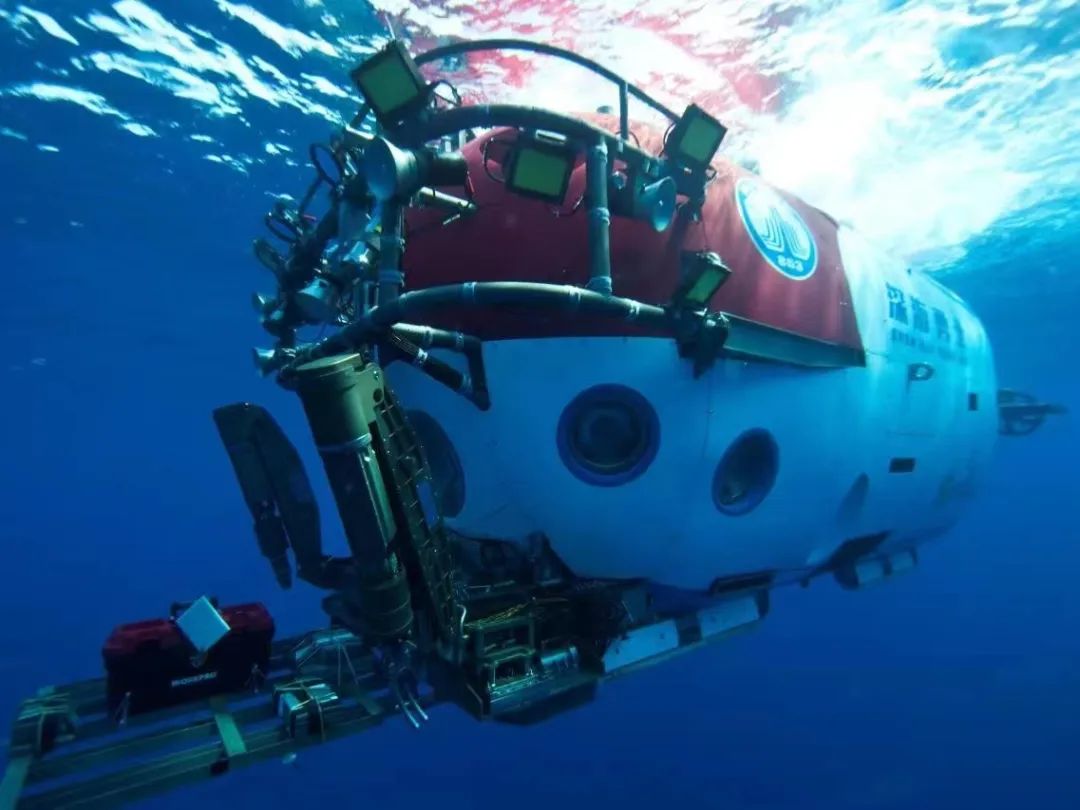
Shenhai Yongshi (Deep Sea Warrior), the country's second-generation deep-sea manned submersible. /NCHA
Shenhai Yongshi (Deep Sea Warrior), the country's second-generation deep-sea manned submersible. /NCHA
Put into operation in 2017, the Shenhai Yongshi manned submersible initiated China's first archaeological work facilitated by manned deep diving technology in April 2018, when the country conducted its archaeological survey in waters off Beijiao of the Xisha Islands.
At that time, China "lacked experience in deep-sea archaeology, with most work in neritic regions within 40 meters, and at the depth of 200 to 300 meters almost reaches the limit of human diving," said Ding Jianxiang, team leader of the archaeological survey.
The first domestic trial and exploration of deep-sea archaeological work concluded with several dives, reaching as deep as over 1,000 meters underwater.
The discovery of the two shipwrecks took place during its 500th dive in October 2022, when the bathymetry and side-scan sonar system mounted on Shenhai Yongshi sent back unexpected images at a depth of 1,500 meters, giving clues for the researchers to trace the two relics.
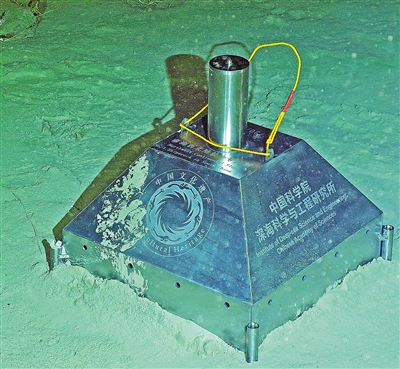
The permanent underwater mapping marker placed in the southwest corner of the shipwreck site. /NCHA
The permanent underwater mapping marker placed in the southwest corner of the shipwreck site. /NCHA
In order to lay a solid foundation for the follow-up deep-sea investigation, the team put a permanent underwater mapping marker in the southwest corner of the shipwreck site.
By doing so, researchers can accurately calibrate its position with the help of the long baseline positioning system, which is just like marking the shipwreck site on the map, Chen Chuanxu, deputy director of the deep-sea science and research department at the Institute of Deep-sea Science and Engineering, said at the press conference.
It can also be connected with geodetic coordinates and geographic information system to ensure scientific, accurate and comprehensive surveying and mapping data, Chen added.
To bring the deep-sea relics closer to the public, Chen said 4K and 8K high-definition cameras will be adopted during further investigations to shoot the scene presenting a clearer vision.
"At the same time, we will utilize underwater 3D laser scanning technology along with optical imaging to complete the 3D scanning and photographic stitching work for a distribution map of relics in the core area of the first shipwreck, which will also provide basic data for the future application of virtual reality technology to digitize submarine relics," Chen said.
New equipment such as flexible robotic arms and submersible sandblasting devices will also facilitate the survey and the cultural artifacts' extraction work in the complex deep-sea environment.
For further investigation of the two relic sites, the scientific research vessels Tansuo-1 and Tansuo-2, with Shenhai Yongshi and Fendouzhe on board, as well as unmanned platform equipment such as the remotely operated vehicle, will continue exploration, sampling and cultural relics extraction.
In 2022, the two manned submersibles had completed a total of 175 dives, according to an annual conference of a scientific instruction committee responsible for them.
Shenhai Yongshi completed 100 dives for a fourth consecutive year, at an average depth of 1,292.52 meters, and Fendouzhe spent 202 days at sea last year, completing 75 dives.
Both submersibles have exhibited world class operational and maintenance capabilities.